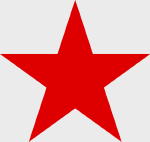Hobby Master HA1715 Soviet Bell P-39N Airacobra Fighter - Capt. Ivan II'ich Babak, 100 GIAP, Germany, January 1945 (1:72 Scale)
"The mission of the Red Air Force was to support the Red Army, and in order to perform this mission air units at division level and above were subordinated to ground formation commanders. The Red Air Force employed the P-39 Airacobra in several roles: the most common role was to cover or protect ground forces. This entailed patrolling in a zone above a specific Red Army formation and preventing the penetration into that zone of German bombers and their accompanying fighters."
- Dmitry Loza's "Attack of the Airacobras"
 The P-39 was one of America's first-line pursuit planes in December 1941. It made its initial flight in April 1939 at Wright Field and by the time of the Pearl Harbor attack, nearly 600 had been built. Its unique engine location behind the cockpit caused some pilot concern, but this proved to be no more of a hazard in a crash landing than with an engine located forward of the cockpit. However, the P-39's spin characteristics could be quite a problem if recovery techniques were ignored.
The P-39 was one of America's first-line pursuit planes in December 1941. It made its initial flight in April 1939 at Wright Field and by the time of the Pearl Harbor attack, nearly 600 had been built. Its unique engine location behind the cockpit caused some pilot concern, but this proved to be no more of a hazard in a crash landing than with an engine located forward of the cockpit. However, the P-39's spin characteristics could be quite a problem if recovery techniques were ignored.
The Airacobra saw combat throughout the world, particularly in the Southwest Pacific, Mediterranean and Russian theaters. Because its engine was not equipped with a supercharger, the P-39 performed best below 17,000 feet altitude, and it often was used at lower altitudes for such missions as ground strafing. When P-39 production ended in August 1944, Bell had built 9,584 Airacobras, of which 4,773 had been allotted to the Soviet Union. Russian pilots, in particular, liked the cannon-armed P-39 for its ground attack capability. Other P-39s served with French and British forces.
This particular 1:72 scale replica of a Soviet P-39N Airacobra fighter was flown by Capt. Ivan II'ich Babak, who was attached to the 100 GIAP, then deployed to Germany during January 1945.
Sold Out!
Dimensions:
Wingspan: 5-3/4-inches
Length: 5-inches
Release Date: March 2016
Historical Account: "Dear Little Cobra" - The most successful and numerous use of the P-39 was by the Red Air Force (Военно-воздушные силы, Voenno-Vozdushnye Sily, VVS). They received the considerably improved N and Q models via the Alaska-Siberia ferry route. The tactical environment of the Eastern Front did not demand the high-altitude performance the RAF and AAF did. The comparatively low-speed, low-altitude nature of most air combat on the Russian Front suited the P-39's strengths: sturdy construction, reliable radio gear, and adequate firepower.
Soviet pilots appreciated the cannon-armed P-39 primarily for its air-to-air capability. A common Western misconception is that the Bell fighters were used as ground attack aircraft. This is because the Soviet term for the mission of the P-39, prikrytiye sukhoputnykh voysk (coverage of ground forces) is commonly translated ground support, which is often taken to mean close air support. In Soviet usage, it has a broader meaning. Soviet-operated P-39s did make strafing attacks, but it was "never a primary mission or strong suit for this aircraft". The Soviets developed successful group aerial fighting tactics for the Bell fighters and scored a surprising number of aerial victories over a variety of German aircraft. Soviet P-39s had no trouble dispatching Junkers Ju 87 Stukas or German twin-engine bombers and matched, and in some areas surpassed, early and mid-war Messerschmitt Bf 109s. The usual nickname for the Airacobra in the VVS was Kobrushka ("little cobra") or Kobrastochka, a blend of Kobra and Lastochka (swallow), "dear little cobra".


